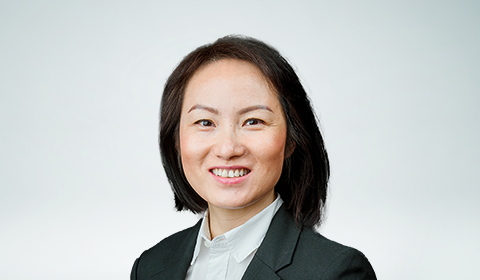Picture this: A young, healthy man visits a doctor complaining of unexplained shortness of breath and coughing blood. After a biopsy, he is referred to an oncologist and receives a terrifying diagnosis: cancer.
A grueling journey begins. The young man must first evaluate treatment options and then endure surgery, chemotherapy, and any number of additional procedures. And yet, the most significant challenge may still lie ahead: living with a critical illness.
A half century ago, surviving cancer, even when detected early, was relatively rare; today, medical advances make survival much more likely. For example, in Hong Kong, five-year survival rates in 2011 reached 90% for breast cancer, 61% for colon cancer and 22% for lung cancer1.
To better understand the cancer survivor’s journey, RGA launched a series of Voice of the Customer market research initiatives throughout the fast-growing markets of Hong Kong, Malaysia, Taiwan, and Singapore. RGA researchers believed a deeper understanding of the first-hand experience of cancer survivors and their caregivers would help better prepare insurers to design meaningful products for this market segment and refine distribution needs. A clear competitive advantage emerged for products that support the physical, emotional, and financial well-being of cancer survivors and their families.
Living with Cancer
Market insight from Asia on this topic is particularly timely. Better risk-factor prevention, stronger awareness, and more effective screening and early detection, combined with more advanced and diverse treatment options, continue to contribute to improving survival rates. For example, the CONCORD-3 report2, a global study of cancer survival led by the London School of Hygiene & Tropical Medicine across 71 countries and territories revealed Southeast Asia nations had the highest survival rates for gastrointestinal cancers, while Japan leads industrialized nations in lung cancer survival.
Singapore also presents a compelling case study: While cancer is the leading cause of death in the city-state, the American Cancer Society’s Cancer Atlas estimates 703 of every 100,000 residents are five-year cancer survivors.
Still, while treatment can certainly prolong lives, it does not always preserve quality of life. Even if a cancer is in remission, the threat of a relapse lingers along with deep physical, emotional, and financial scars. The American Cancer Society reports that, compared with those who have not had cancer, cancer survivors report higher rates of mental health issues and late effects that can occur months or even years after treatment ends, such as cardiac problems, lymphedema, impaired functional status, and second cancers.
As early detection and treatment improves, countries throughout Asia are reporting both higher cancer and survival rates along with rising costs related to ongoing, expensive medical interventions. The longitudinal ACTION3 study of 9,513 hospitalized patients in Southeast Asia with a first-time diagnosis of cancer showed that, within a single year, 48% experienced financial distress, with out-of-pocket costs exceeding 30% of annual income. If these trends continue, insurers will need to help find real solutions, as excluding those with pre-existing conditions may not be an option for a trend that is becoming the rule rather than the exception.
Protection from Uncertainty
To learn more, RGA conducted a series of one-to-one interviews and focus groups across Malaysia, Singapore, Taiwan, and Hong Kong featuring a diverse group of cancer patients, survivors, and their caregivers. Participants came from various backgrounds, ages and walks of life, yet shared some important commonalities:
- Respondents reported feelings of severe stress and loss of control after a cancer diagnosis. Uncertainty about future health ranked as the leading concern among all patients, including longer-term cancer survivors, and respondents shared worries that treatment could last far longer than projected. Side effects of treatment also can take both a physical and emotional toll on patients and their caregivers. Both caregivers and patients reported feelings of exhaustion and emotional strain, as well as physical deterioration.
- Survivors prioritized a return to normal life and an end to the uncertainty caused by their diagnosis. In fact, rather than pursuing a second medical opinion or exploring experimental treatment options, most preferred to enter treatment immediately. After all, lengthy cancer treatments can cripple family finances through both lost wages and cost of care. In fact, many participants struggled to estimate the total cost of treatment, due to an array of unanticipated post-treatment expenses and income loss.
- Patients’ existing policies often proved insufficient to cover the true cost of their illness. Most cancer survivors in RGA’s research believed they were underinsured, especially in markets that lack national health insurance. In Malaysia, for example, nearly 70% of patients or survivors felt insurance was not able to provide full coverage during the claims process, particularly for important outpatient treatments like chemotherapy. Even in Singapore, home to the MediShield Life/ Integrated Shield public health system, survey participants shared worries about affording costly post-hospitalization expenses, such as routine follow-up visits and laboratory tests. These are not covered by the public health system.
Such market research illuminates a growing – and largely unmet – need in Asia for coverage for those who have had a critical illness diagnosis. Critical illness (CI) products for early stage cancer, cancer relapse, metastasis, and new primary cancers could be designed to offer lump-sum payouts, delivering guaranteed income to help policyholders cope with both anticipated and unexpected expenses during treatment and recovery. These products could also offer regular level premiums to deliver stability, and they could include coverage of home care services and death benefits to provide added security for dependents.
Several insurers are now responding to the need. RGA found that a targeted underwriting process and agent-led distribution approach could deliver a competitive edge. Cancer survivors appreciated the clarity of targeted underwriting questions and some did not mind having to pay for a medical report as part of the insurance application process to aid in their personalized assessment.
Supported by this market research and insight, RGA partnered with a client in Taiwan to develop a permanent health insurance (PHI) product that insures patients diagnosed with cancer of all stages. The stand-alone protection plan delivers what patients want most: insurance protection for individuals diagnosed with the most common 10 female and male cancers. Not only are those with a previous history of cancer offered protection, but the entire risk assessment journey provides for a fairly straightforward consumer experience. To speed policy issue, the product relies on a simple “accept or reject” underwriting process based on a pre-defined disease list.
It also represents the first ever PHI product in Asia targeting cancer patients, offering cash benefits for hospitalization including coverage for intensive care unit stays and surgery. In a similar acknowledgement of the need for insurance solutions for those with a prior cancer diagnosis, a Hong Kong insurer recently launched a first-in-market CI product that provides 100% lump sum protection for a new or recurring cancer upon diagnosis. It also offers holistic homecare services to support in-home recovery as well as a compassionate death benefit.
Protecting income is far from the only advantage of cancer CI. RGA market research reveals demand for value-added benefits, such as access to advanced tumor genomic profiling and monitoring and respite care for family members. However, interest wanes when these offerings come with an extra cost.
A Wake-Up Call
If cancer survivors and their families are less willing to pay for some wellness incentives, most appear to embrace protection products whole-heartedly. RGA’s market research suggests that a single cancer diagnosis of a loved one can alert members of an entire extended family to their financial vulnerability and trigger increased demand for critical illness and other protection products. Many families of cancer patients and survivors described news of a diagnosis as a wake-up call, and they sought to increase insurance coverage or purchase new protection for children or to purchase insurance in a spouse’s name.
However, many of these potential policyholders are still waiting for the industry to respond to this opportunity. In a quantitative survey of the Taiwan market, RGA partnered with the Taiwan Hope Foundation of Cancer Care (HFCC) to study cancer patients and survivors. Researchers found that, after-diagnosis, 32% of cancer patients attempted to buy insurance for themselves and their families. Critical illness cover was the preferred choice, followed by hospital cash and life protection products. Unfortunately, three-quarters of these applicants were rejected – with only 6% managing to successfully purchase policies.
Insurers can do better. Early detection and medical advances are transforming cancer into a disease that is often eliminated or into a condition that is a manageable chronic disease. Well-designed critical illness protection products, tailored around the real-life needs of cancer patients and survivors, can help many rebound from a diagnosis and rebuild their lives.



